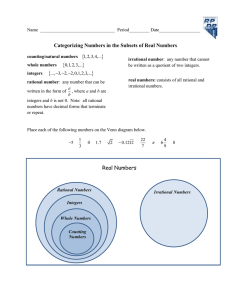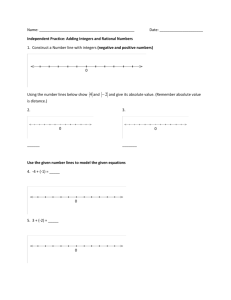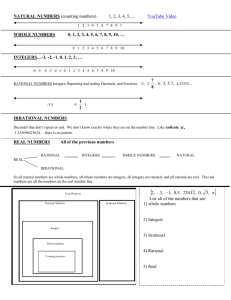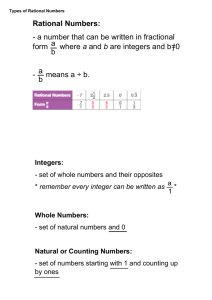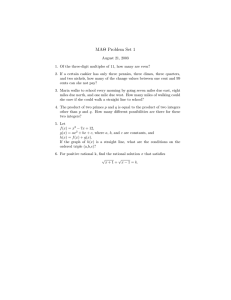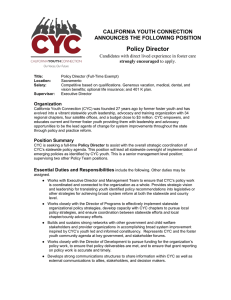AMM problems February 2013, due before 30 June 2013 TCDmath problem group
advertisement
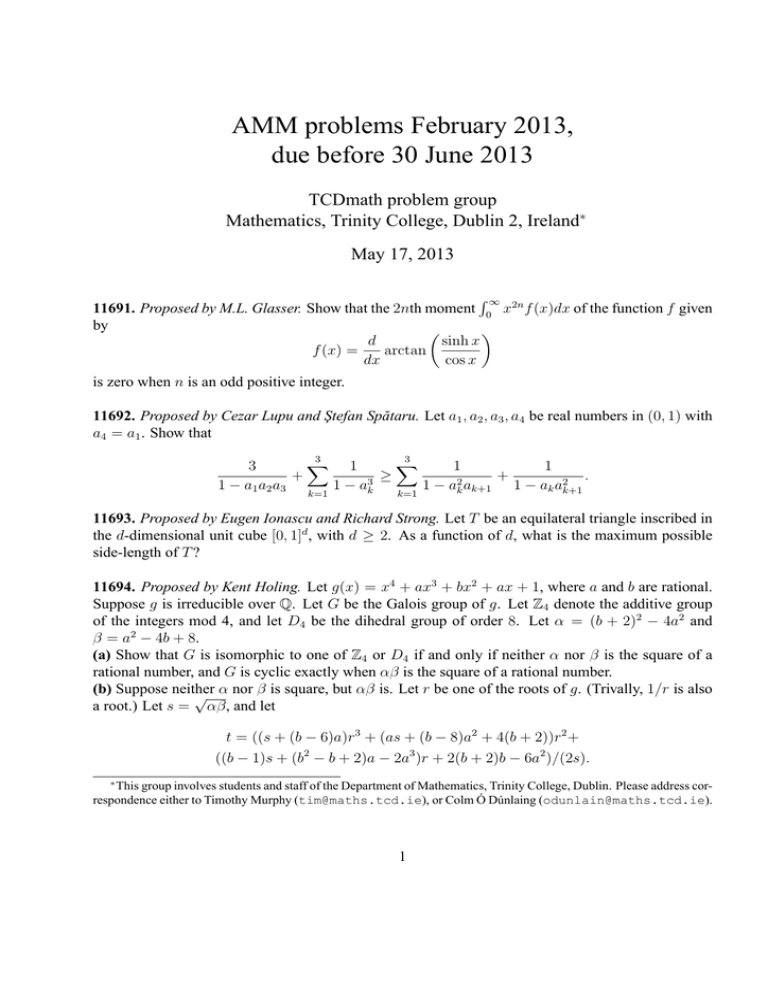
AMM problems February 2013, due before 30 June 2013 TCDmath problem group Mathematics, Trinity College, Dublin 2, Ireland∗ May 17, 2013 R∞ 11691. Proposed by M.L. Glasser. Show that the 2nth moment 0 x2n f (x)dx of the function f given by d sinh x f (x) = arctan dx cos x is zero when n is an odd positive integer. 11692. Proposed by Cezar Lupu and Ştefan Spătaru. Let a1 , a2 , a3 , a4 be real numbers in (0, 1) with a4 = a1 . Show that 3 3 X X 1 3 1 1 ≥ + . + 3 2 2 a 1 − a1 a2 a3 k=1 1 − ak 1 − a 1 − a k+1 k ak+1 k k=1 11693. Proposed by Eugen Ionascu and Richard Strong. Let T be an equilateral triangle inscribed in the d-dimensional unit cube [0, 1]d , with d ≥ 2. As a function of d, what is the maximum possible side-length of T ? 11694. Proposed by Kent Holing. Let g(x) = x4 + ax3 + bx2 + ax + 1, where a and b are rational. Suppose g is irreducible over Q. Let G be the Galois group of g. Let Z4 denote the additive group of the integers mod 4, and let D4 be the dihedral group of order 8. Let α = (b + 2)2 − 4a2 and β = a2 − 4b + 8. (a) Show that G is isomorphic to one of Z4 or D4 if and only if neither α nor β is the square of a rational number, and G is cyclic exactly when αβ is the square of a rational number. (b) Suppose neither √ α nor β is square, but αβ is. Let r be one of the roots of g. (Trivally, 1/r is also a root.) Let s = αβ, and let t = ((s + (b − 6)a)r3 + (as + (b − 8)a2 + 4(b + 2))r2 + ((b − 1)s + (b2 − b + 2)a − 2a3 )r + 2(b + 2)b − 6a2 )/(2s). ∗ This group involves students and staff of the Department of Mathematics, Trinity College, Dublin. Please address correspondence either to Timothy Murphy (tim@maths.tcd.ie), or Colm Ó Dúnlaing (odunlain@maths.tcd.ie). 1 Show that t ∈ Q[r] is one of the other two roots of g. Comment on the special case a = b = 1. 11695. Proposed by Ovidiu Furdui. The Stirling numbers of the first P kind, denoted s(n, k), can be defined by their generating function: z(z − 1) · · · (z − n + 1) = nk=0 s(n, k)z k . Let m and p be nonnegative integers with m > p − 4. Prove that Z 1Z 1 log x · logm (xy) · log y dxdy (1 − xy)p 0 0 ( (−1)m 16 (m + 3)!ζ(m + 4), if p = 1; P = p−1 (m+3)! (−1)m+p−1 6(p−1)! k=1 (−1)k s(p − 1, k)ζ(m + 4 − k) if p > 1. 11696. Proposed by Enkel Hysnelaj and Elton Bojaxhiu. Let T be a triangle with sides of length a, b, c, inradius r, circumradius R, and seimiperimeter p. Show that 1X 4X 1 1 1 . + ≥ 2(r2 + 4Rr) 9 cyc c(p − c) 9 cyc 9Rr − c(p − c) 11697. Proposed by Moubinool Omarjee. Let n and q be integers, with 2n > q ≥ 1. Let f (t) = Z Rq 2n 2n e−t(x1 +...+xq ) dx1 · · · dxq . 2n 1 + x2n 1 + . . . xq Prove that limt→∞ tq/2n f (t) = n−q (Γ(1/2n))q . 2


